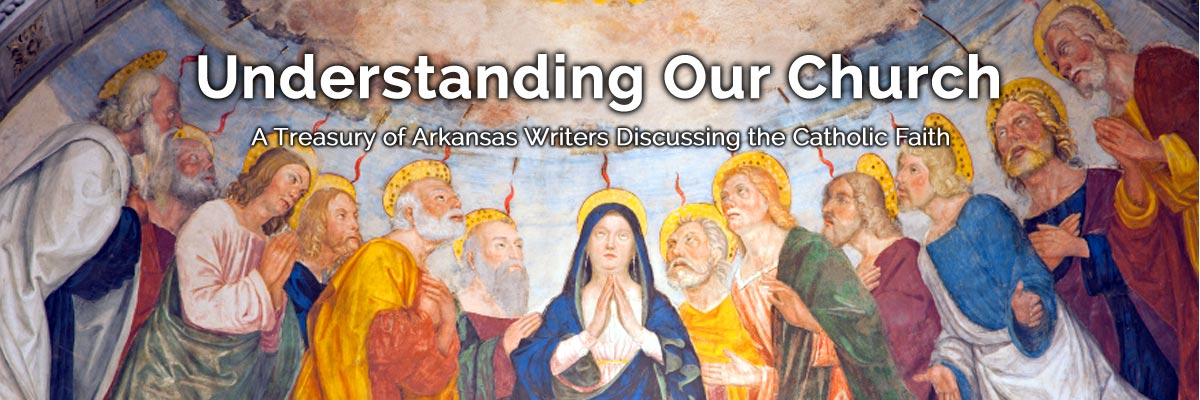Official Website of the
Catholic Diocese of Little Rock
Resurgence of deacons has its roots in Nazi concentration camp
Published: September 14, 2017
By Betsy Wiederkehr Huss
Blessed Sacrament Church, Jonesboro
Why do we have ordained deacons in the Catholic Church? The history might surprise you.
By looking in the New Testament at Acts 6, we see this special ministry started out of need. It began with a need for the poor in the community to be served and a need to help the apostles fulfill their tasks and not neglect them. So, “seven reputable men, filled with the Spirit and wisdom” were chosen to serve the poor in their community. The Greek word "diakonos," from which we get “deacon,” means “helper” or “servant.”
These men were presented to the apostles who laid their hands on them and prayed. This Jewish custom, “laying on of hands” when appointing someone to have authority for a special task and summoning upon them God’s blessing and power to perform it, can also be seen in ordination ceremonies.
Who would have thought that at a death camp during war a seed of hope for this special order within the Church would be reborn?
As time passed, deacons primarily served bishops by representing them, writing letters, helping proclaim the Gospel and serving the poor and those in need. Owen Cummings, author of “Deacons and the Church,” said, “A deacon was a powerful figure in the early Church. Many were in charge of the treasury, and many became popes.”
The third century brought confusion and a decline to the diaconate concerning roles of priests and deacons. Cummings explains, “The role an ordained minister played with respect to the Eucharist determined one’s place within the Church. The diaconate went into decline in the post-Nicene period as the Eucharist was delegated by the bishops to the presbyters.” (priests)
Parishes did not exist before the fourth century, and priests in increasing numbers started meeting the pastoral needs of people which had before been met by deacons.
After this, deacons were dispatched to foremost assist priests at the altar. The diaconate was seen as a stepping stone to priesthood and hence the name “transitional” deacon. But due to misunderstandings of their role, by the Middle Ages, “permanent” deacons were almost extinct. At the Council of Trent the idea to restore the permanent diaconate failed.
Then, 400 years later, during World War II at Dachau, a Nazi concentration camp, a group of imprisoned Catholic men thought it possible for permanent deacons to serve in a positive manner there. The group, the Deacon Circle, met even after the war ended, working for justice. An International Diaconate Circle was established by 1959. Then, during the Second Vatican Council, a call was made by many German Council priests to restore this sacred order to the Latin Church. (The Eastern Churches had maintained it.) On Oct. 30, 1963, the permanent diaconate was restored. On Nov. 21, 1964, it was officially declared a part of the “Dogmatic Constitution on the Church.”
“Deacons are ordained as a sacramental sign to the Church and the world that Christ came to serve and not to be served,” wrote Tim Drake in “The Role of Deacons: Then and Now.”
Who would have guessed that in the United States the ministerial order of permanent diaconate would grow from zero in 1970 to 15,000 in present times? Who would have thought that at a death camp during war a seed of hope for this special order within the Church would be reborn? God works in mysterious ways. May we lift up in prayer all servants of the Lord as they seek to follow God, do justice and live by his love.




